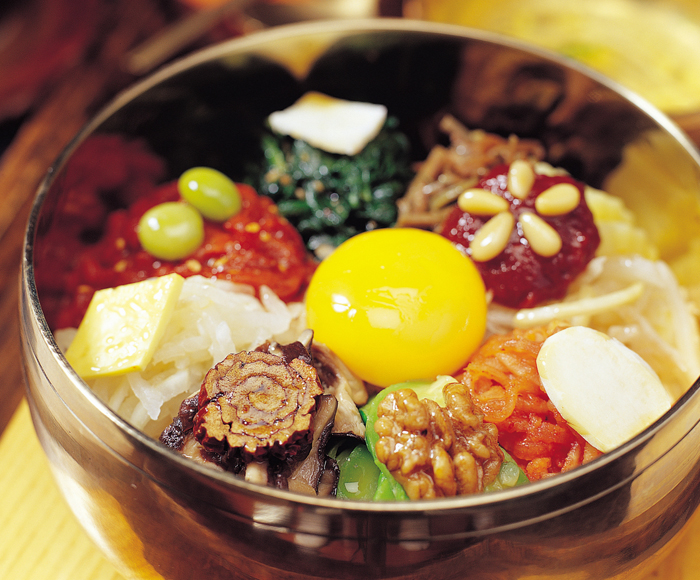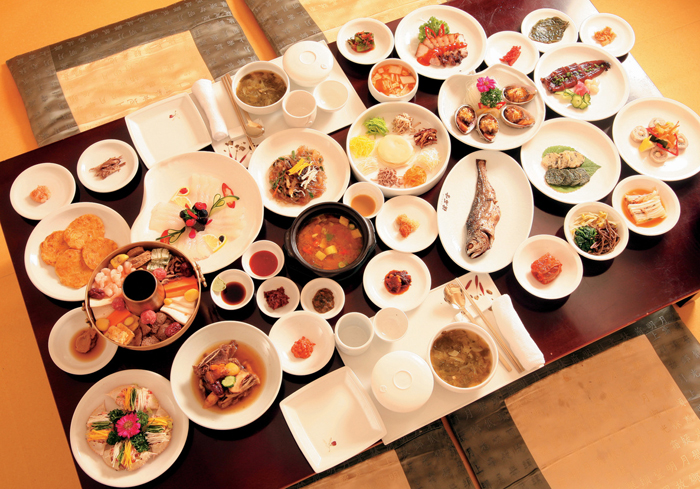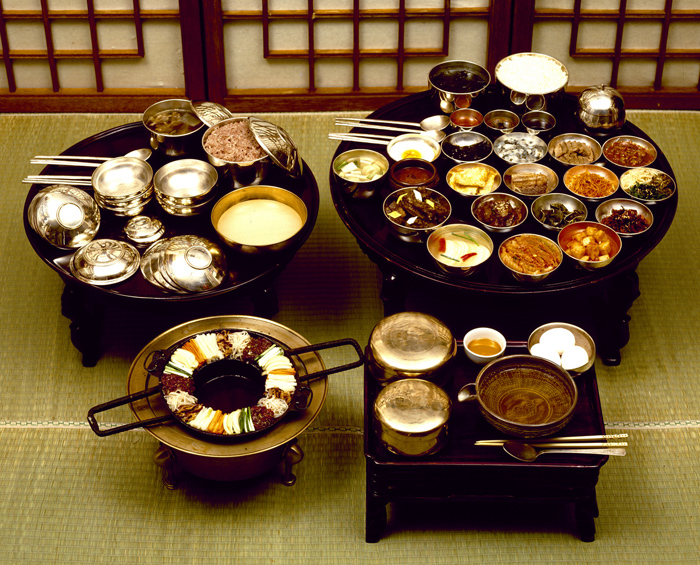
?
Hansik (Korean Cuisine) ? an abundance of tastes, ingredients, dishes - and surprisesHansik is renowned the world over for its exceptional use of fresh local, seasonal ingredients to create a wide variety of delicious dishes shared with family and friends.

<Hanjeongsik table served for two people.>?
?
Hanjeongsik, a Korean full-course meal with five surprises
Foreigners who have experienced hanjeongsik, the Korean equivalent of the Western course meal, are usually surprised a total of five times. The first surprise is the immense size of the table. When seated, it is impossible to reach the opposite end of the table with one's arm. The second is the fact that the table is so completely covered with dishes that there is no space left on it; each dish holds a different food.?
?

<A recreation of a typical king's meal during the Joseon Dynasty.>?
The third surprise is that of all the foods present, the only ones that are for one's exclusive consumption are rice and soup. The other foods are to be enjoyed with the other people present at the table in a communal interaction of spoons and chopsticks. There is no such thing as spooning out food for oneself on a separate dish. Recently, it has become common to take portions of food onto individual dishes for the sake of hygiene, but the original way of eating Korean food was the shared dipping of utensils into stews, soups and side dishes. Because of this practice, Westerners who are accustomed to eating only the food on one's plate experience a profound culture shock.?
?
The fourth surprise is the chopsticks. The act of using two thin sticks to bring food to the mouth is no easy task. It takes several years even for Korean children to become accustomed to this utensil. To many foreigners seeing Korean chopsticks for the first time, the fact that people actually eat with them alone is quite unbelievable. The last surprise is the taste of the food. It is within this fifth surprise that the characteristics of Korean food shine.?
?
Korean food is not served in a time-based format of soup or salad, appetizer, and main dish in sequential order. Instead, all foods of the meal are placed on a single table at once in a "space-based" format. As a result, the Korean meal is not a single table spread in which a person eats only what is placed in front of them, but a shared table that everyone enjoys together. The Korean meal does not involve passive enjoyment of food that is served one after the other, but is an "active" table in which each person may choose what he or she likes from the diverse dishes on the table. These characteristics of the Korean meal resulted in a unique culinary culture that is rarely seen anywhere else in the world.?